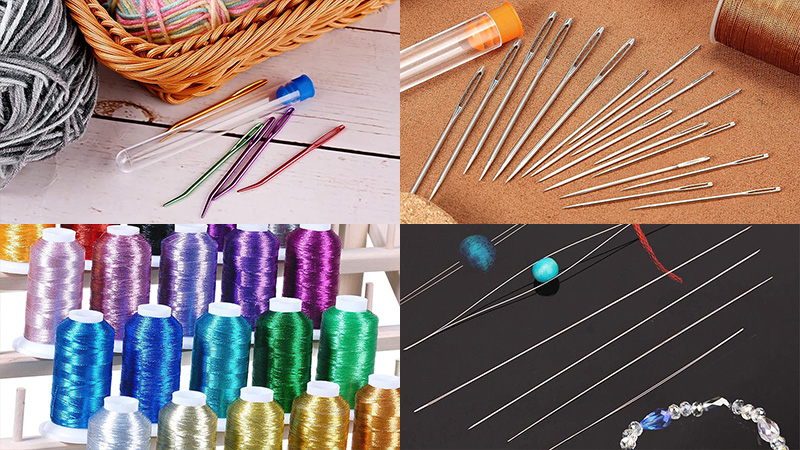
Embroidery, a timeless craft spanning generations, continues to captivate as a favored decorative art form. Its enduring charm has evolved with time, seamlessly blending tradition and modernity.
For those embarking on an embroidery journey, acquiring the perfect materials is paramount. From the delicate dance of threads to the precision of needles, every component plays a vital role.
In this guide, we’ll unveil a comprehensive list of essential embroidery materials, demystify their significance, and offer insights into selecting the ideal supplies for your project.
With these foundational tools, the art of embroidery becomes a canvas for your creativity to flourish, ensuring every stitch tells a tale of skill and passion.
1. Embroidery Thread
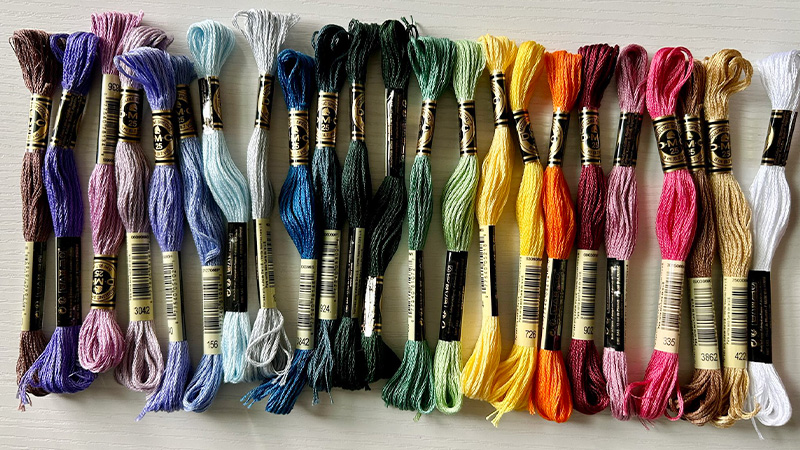
Embroidery thread is a special type of yarn that is specifically designed for stitching and other types of needlework. It is available in a variety of materials, colors, and thicknesses so that it can be used for various projects.
Common materials used for embroidery thread include cotton, rayon, polyester, and silk. The colors range from classic solids to bright and vibrant hues, as well as variegated and even metallic shades.
Threads can also come in different weights, from very fine to thick and bulky.
Depending on the type of project and the level of detail desired, the appropriate type of thread can be chosen. For instance, finer threads are best for intricate details, while heavier threads are better for bolder designs.
Embroidery thread is an essential material for creating beautiful needlework projects.
2. Cotton

Cotton is a natural fiber that is used for a variety of purposes, from clothing to home furnishings. It is derived from the seed pods of plants in the genus Gossypium, which belong to the mallow family Malvaceae.
Cotton is soft and fluffy, and when harvested, it is found in a protective case called a boll. The fiber of cotton is almost completely composed of cellulose, though it may contain trace amounts of waxes, fats, pectins, and water.
These components can affect the quality and feel of the cotton, and they can also affect the way it is processed and used. For example, waxes can make the cotton more resistant to water, while fats and pectins can make it more resilient and durable.
All of these elements come together to make cotton an incredibly useful and versatile material.
3. Clover Gold Eye Embroidery Needles
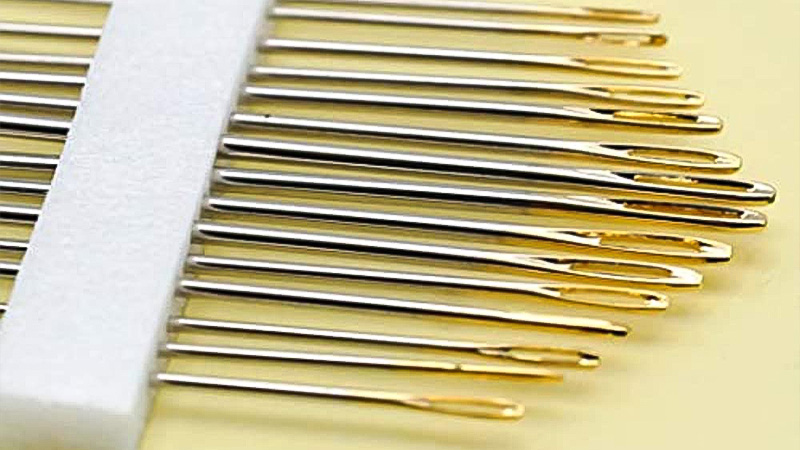
Clover’s Gold Eye Embroidery Needles combine functionality and elegance. With their distinct gold-plated eye, threading becomes effortless, reducing strain on your eyes.
The needles come in various sizes, accommodating different fabric and thread combinations. These needles, featuring smooth and polished tips, glide through fabric with precision, making your embroidery experience a delight.
Designed for comfort and durability, Clover Gold Eye Embroidery Needles are an essential tool for every embroidery enthusiast, ensuring your stitches are impeccable and your creative journey is seamless.
4. Embroidery Hoops and Frames
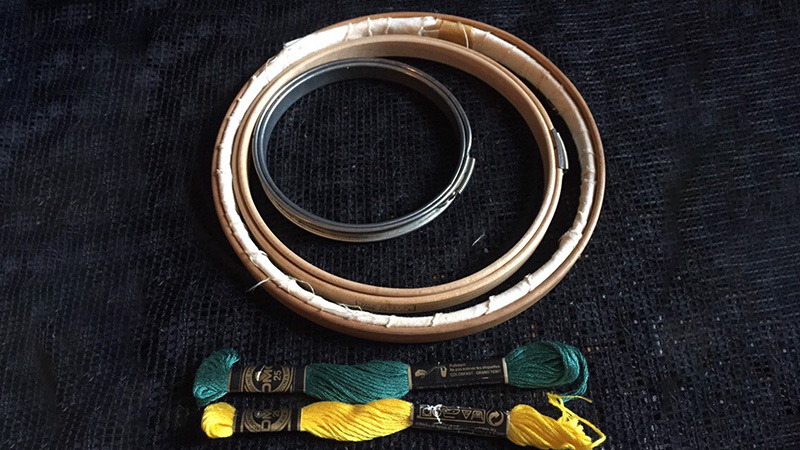
Embroidery hoops and frames are essential tools for any needleworker. They are used to keep the fabric taut and stable while working on the project.
This is important because it ensures that the needlework is done with precision and accuracy and that the fabric does not shift, stretch or warp. Embroidery hoops are typically round frames made from either wood or plastic which are used to hold the fabric in place.
Frames are also available and are used for larger pieces of fabric. These are usually rectangular and may be made from wood, metal or plastic. Both types of tools are adjustable, allowing the needleworker to adjust the tension on the fabric as needed.
In addition, they provide a convenient way to keep the fabric in place while working. By providing a stable and taut surface, embroidery hoops and frames make it easier to create beautiful embroidery and other needlework.
5. Felt
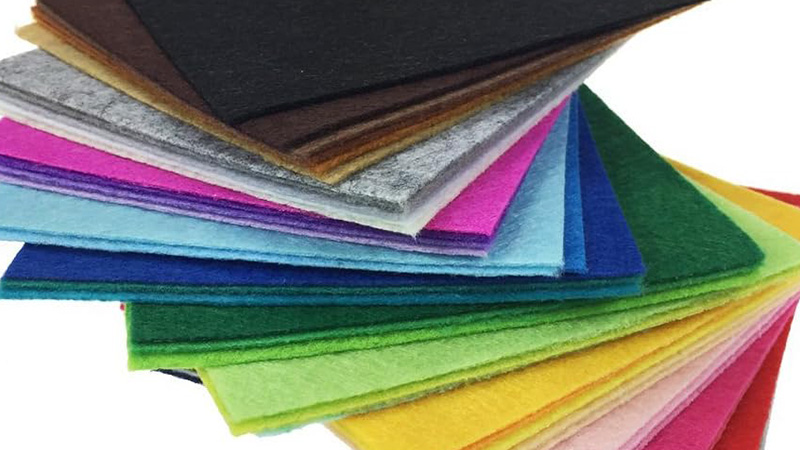
Felt is a unique type of fabric that is created by a process of matting, condensing, and pressing fibers together. This method of fabric creation has been used around the world for centuries, making it a timeless material that is widely used.
Felt can be created from a variety of natural or synthetic fibers, which can be combined to create a unique blend.
Natural fibers such as wool or animal fur are often used, while synthetic fibers like petroleum-based acrylic, acrylonitrile, and wood pulp-based rayon are also popular choices.
Blended fibers are also a popular choice for felt, as they provide a wider range of textures and colors. Felt is a versatile material that can be used for a variety of applications, including clothing, carpets, and even furniture.
Its unique qualities make it an ideal choice for many types of projects.
6. Sewing Needle
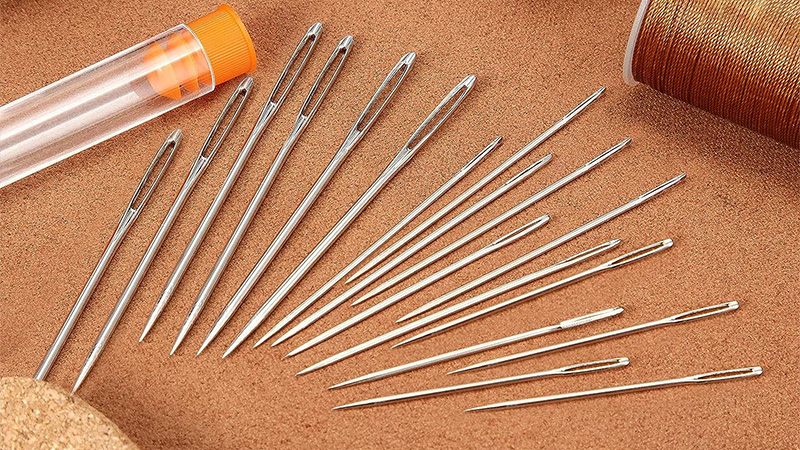
A sewing needle is an essential tool for hand-sewing. It is typically long and slender in shape, with a pointed tip at one end. The other end of the needle has a hole for the thread to be passed through.
Historically, sewing needles were made from materials such as bone and wood. However, modern needles are usually manufactured from high-carbon steel wire, and treated with a coating of nickel or 18K gold for corrosion resistance.
This ensures that the needle won’t rust easily and can be used for multiple sewing projects. The needle’s point is sharp enough to pierce through the fabric, making it an ideal tool for sewing.
The hole in the needle also helps to guide and secure the thread, ensuring that the stitches are even and consistent. With the help of a needle, hand-sewing projects can be completed efficiently and with professional-looking results.
7. Chintz
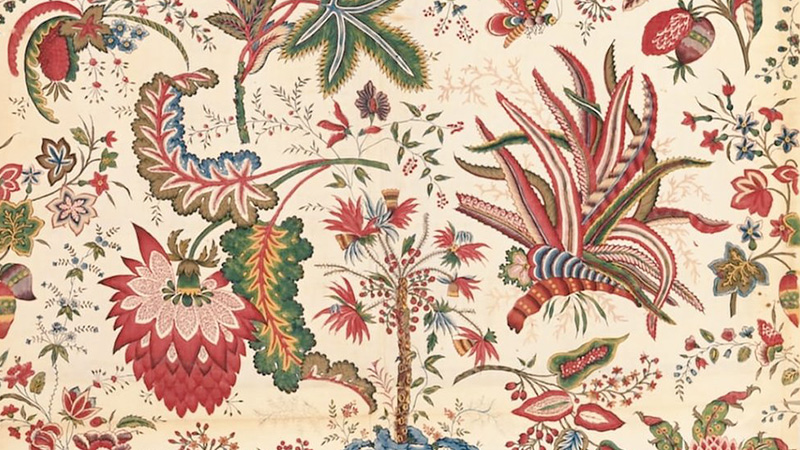
Chintz is a type of calico textile that originated in Golconda, India in the 16th century. It is created by using a woodblock printing technique, where designs are carved into wooden blocks, which are then used to create patterns on fabric.
The resulting fabric is often painted, stained, or glazed to enhance the design. Chintz typically features bright and colorful designs of flowers or other patterns on a light, plain background.
These designs are often intricate and detailed and can be used to make clothing, bedding, curtains, and other decorative items. Because of its beauty and durability, chintz has been used in many cultures for centuries and continues to be popular today.
8. Denim
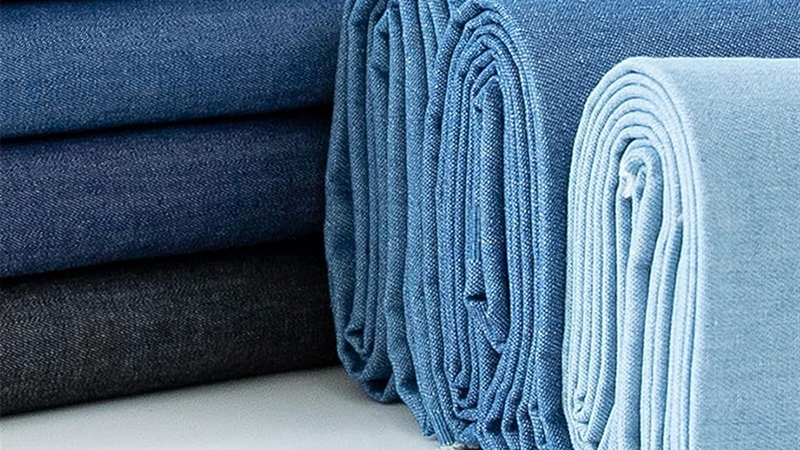
Denim is a type of fabric that is woven in a particular way to make it strong and durable. It is made from cotton yarn, which is woven into a twill weave pattern.
In this weave pattern, the weft thread passes under two or more warp threads.
This creates a diagonal ribbing pattern on the fabric which makes it look distinct from other types of cotton fabric, such as cotton duck. The diagonal ribbing is what gives denim its famous look and makes it instantly recognizable.
Denim is also well known for its ability to resist wear and tear, making it ideal for items such as jeans and jackets. As a result, denim is a popular fabric choice and is used in a variety of garments.
9. Linen
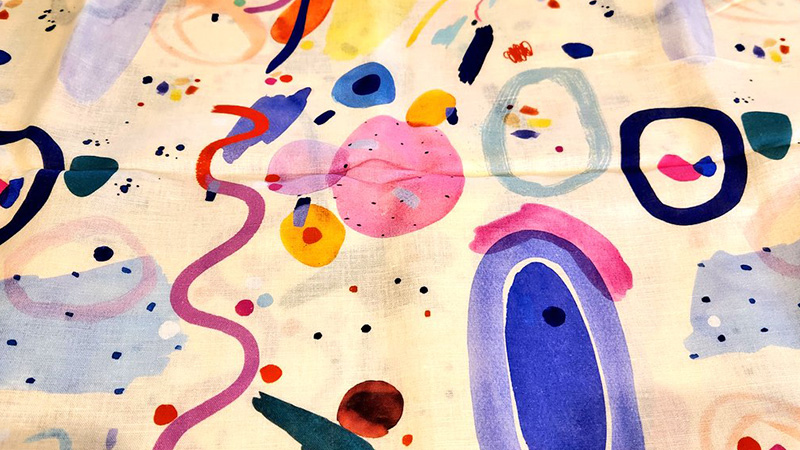
Linen is a type of textile that is made from the fibers of a flax plant. This type of fabric is known for its strength and absorbency, making it highly desirable for use in clothing.
Linen is also known to dry faster than cotton, which makes it highly comfortable to wear in hot weather. In addition, linen is also valued for its use in garments due to its properties.
This textile can be made from the fibers of the flax plant, as well as through the use of yarn, weaving or knitting. The fibers of the flax plant provide an exceptionally strong and durable fabric, while the use of yarn or weaving can create different textures and patterns.
Knitting is also a popular technique used to create linen items, as it can provide more intricate details. Linen is an excellent choice for clothing due to its strength, absorbency, and ability to dry quickly, making it a highly sought-after fabric for many garments.
10. Embroidery Scissors
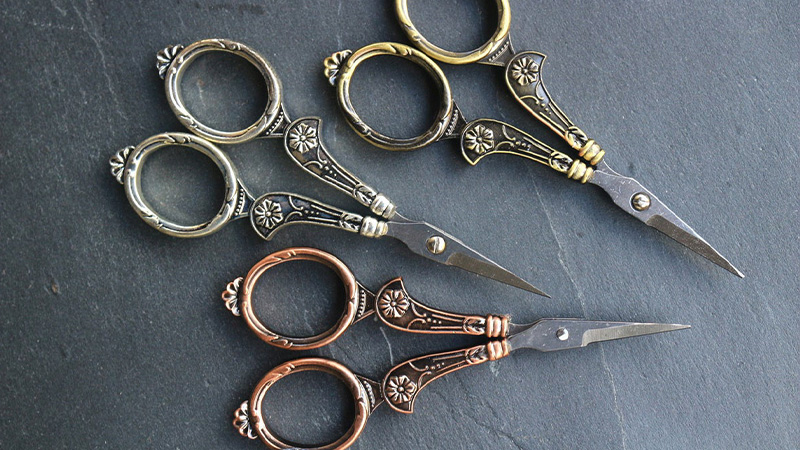
Embroidery scissors are small yet indispensable tools for precision cutting in needlework. With delicate, pointed tips, they effortlessly trim excess thread, preventing fraying and maintaining clean edges.
Crafted with sharp stainless steel blades, these scissors ensure accurate cuts without damaging the surrounding fabric. Their compact size allows for intricate work, making them ideal for detailed embroidery projects.
The ergonomic design offers comfort, reducing hand fatigue during extended use. Whether you’re snipping thread or making intricate cuts, embroidery scissors are essential for achieving polished, professional results in your needlecraft creations.
11. Crewel Embroidery
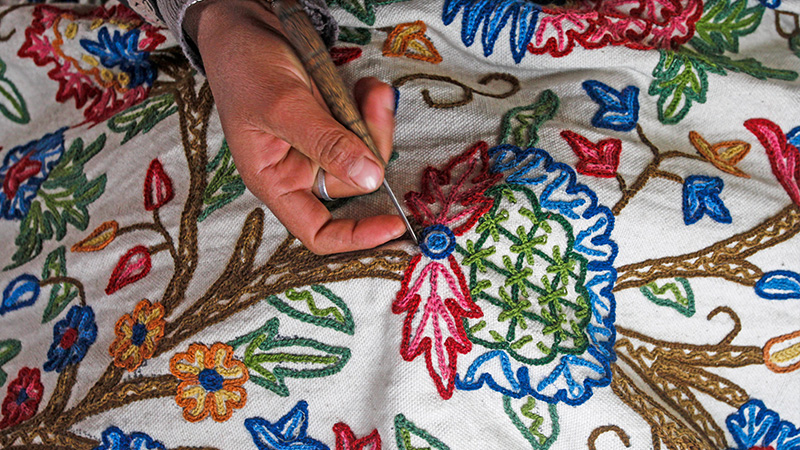
Crewel embroidery, also known as crewelwork, is a type of surface embroidery that dates back at least a thousand years. It is a unique technique that involves using wool thread to stitch a design onto a fabric.
To achieve this, a variety of different embroidery stitches are used to follow the outline of the design. These stitches can range from simple straight stitches to more intricate ones such as French knots and satin stitches.
Crewel embroidery has been used throughout history to create beautiful, ornamental textiles, and it is still popular today for its unique look and timeless appeal.
It can be used to create intricate designs for clothing, home decor, and even wall hangings.
Crewel embroidery is a great way to add a touch of beauty and sophistication to a variety of projects.
12. Dmc Cebelia Crochet Cotton
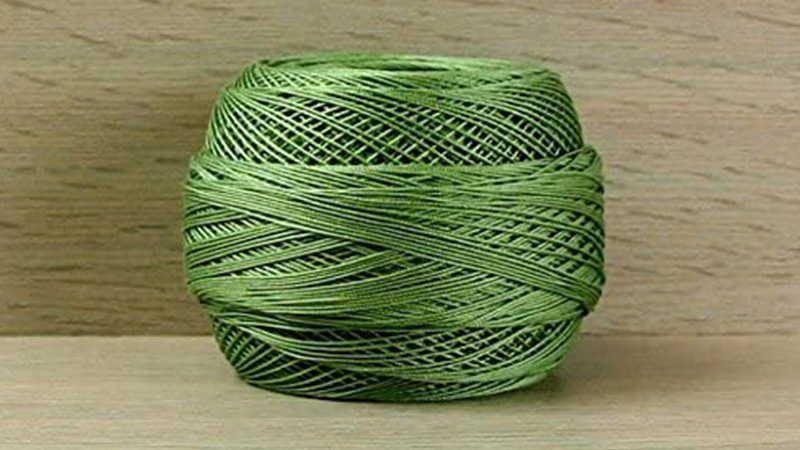
DMC Cebelia Crochet Cotton is a premium thread cherished by crochet enthusiasts. Renowned for its exceptional quality, this cotton thread offers a soft, smooth texture that effortlessly glides through hooks and creates intricate designs.
Available in a spectrum of vibrant colors and different thicknesses, it’s perfect for diverse projects from delicate lace to robust accessories. The mercerized finish enhances sheen and durability, making finished pieces stand out while ensuring they withstand the test of time.
Whether you’re crafting doilies, garments, or decorative items, DMC Cebelia Crochet Cotton guarantees stunning results that showcase your creativity and skill in every stitch.
13. Yarn
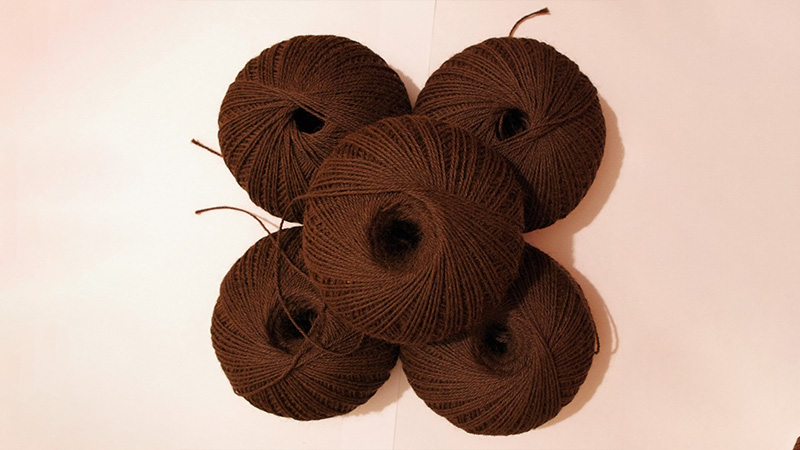
Yarn is an essential material used in the textile industry. It consists of a long continuous strand of interlocked fibers which are twisted together.
It can be used in a variety of textile processes, including sewing, crocheting, knitting, weaving, embroidery, ropemaking, and the production of textiles.
Yarn is available in a variety of materials, such as cotton, wool, and synthetic fibers. Thread is a type of yarn, but it is specifically intended for use in hand or machine sewing.
Thread is usually thinner than yarn, and it is typically made of the same material as yarn.
Thread is available in a wide range of colors and sizes to suit different sewing needs. Thread is used to stitch materials together, and is one of the most important components in the sewing process.
14. Pinking Shears
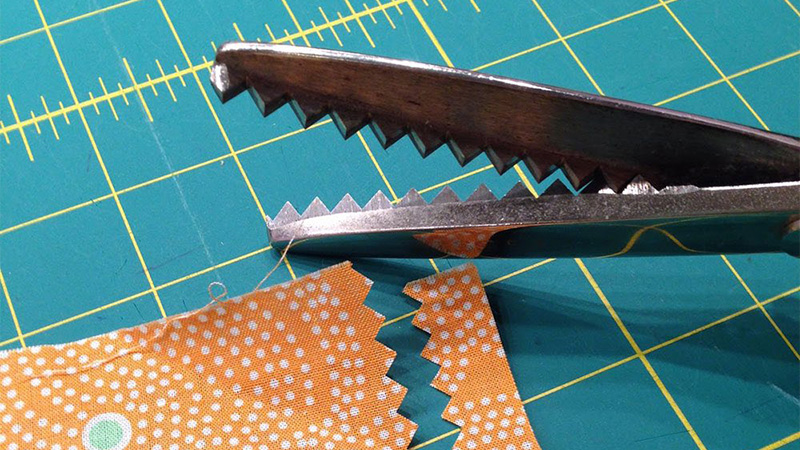
Pinking shears are a type of scissors with saw-toothed blades instead of straight blades. This means that when the scissors are used to cut fabric, they produce a zigzag pattern instead of a straight edge.
Before pinking shears were invented, a pinking punch or pinking iron was used to create a decorative hem on a garment. This tool was used to punch out a series of small, even circles in the fabric, which produced a similar zigzag pattern as the one created by the pinking shears.
Pinking shears allowed for a much more precise cutting of fabric, allowing for more intricate and delicate patterns to be created.
Pinking shears are most commonly used to finish hems and seams to stop them from fraying, although they can also be used for decorative purposes as well.
15. Chenille Needles
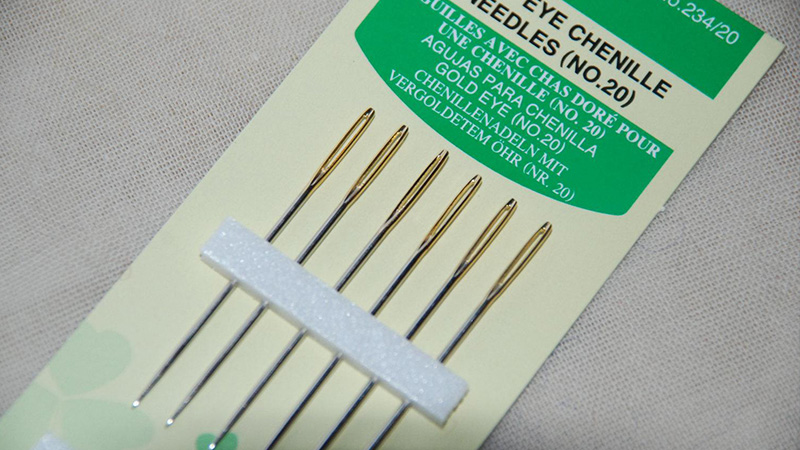
Chenille needles are specialized tools designed for various needlework projects. With a sharp point and a large, elongated eye, they are ideal for threading thicker threads, yarn, or ribbon through fabric effortlessly.
These needles are indispensable for activities like ribbon embroidery, crewel work, and embellishing fabrics. Their unique construction ensures minimal fraying while creating larger and bolder stitches.
Chenille needles come in various sizes, catering to different fabrics and thread thicknesses. Whether you’re adding texture to your creations or working on decorative projects, chenille needles offer precision, convenience, and versatility, making them a valuable addition to any needlework toolbox.
16. Plastic

Plastics are a unique type of material that have become increasingly popular due to their versatility and durability. They are composed of polymers, which are long chains of molecules that can be tailored to meet specific properties.
Plastics are able to take on many different shapes and forms due to their plasticity, which is the ability of a material to be formed into any shape.
This makes them perfect for a variety of applications, from packaging materials to protective coatings. Plastic objects can be formed by either molding, extrusion or pressing.
Molding involves pouring molten plastic into a mould and then cooling it until it takes on the desired shape. Extrusion involves pushing plastic through a die, which shapes the material into a continuous length of whatever shape the die is designed for.
Pressing involves pressing the plastic into a mould to create a specific shape. In addition to being able to be formed into various shapes, plastics are also lightweight, durable, and often inexpensive.
This makes them ideal for a variety of products, from bottles and bags to toys and automotive parts.
Furthermore, plastics can be tailored to meet specific properties, such as flame retardancy, electrical conductivity, and UV resistance. Overall, plastics are a versatile and useful material that can be tailored to meet a variety of needs.
Their plasticity makes them ideal for creating products of various shapes and sizes, while their durability and affordability make them a popular choice for many applications.
17. Tracing Paper
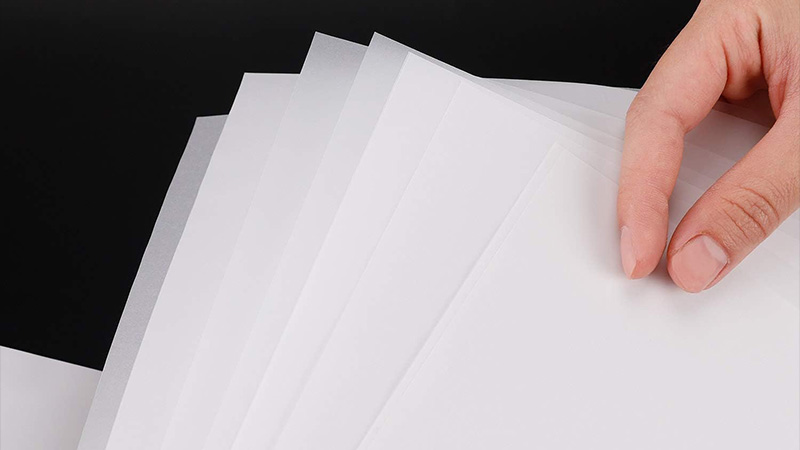
Tracing paper is a unique type of paper which has been designed to be almost translucent, allowing light to pass through it. Its origins can be traced back to at least the 1300s where it was used by talented artists of the Italian Renaissance.
This type of paper gave these artists the ability to trace intricate designs and patterns onto another piece of paper and create exact replicas of their artwork.
In the late 1800s, tracing paper was produced en masse, allowing not just artists, but also architects and design engineers, to make copies of their plans and drawings.
This was especially useful for the architects and design engineers since it allowed for them to easily make changes to their plans and drawings without having to start from scratch.
Tracing paper is still used extensively today by a variety of professions, from architects and engineers to artists and crafters. It is an invaluable tool that allows for precise duplication of artwork and plans.
It is also a great way to transfer designs onto different materials, such as fabric or wood.
18. Needles | Crewel Embroidery
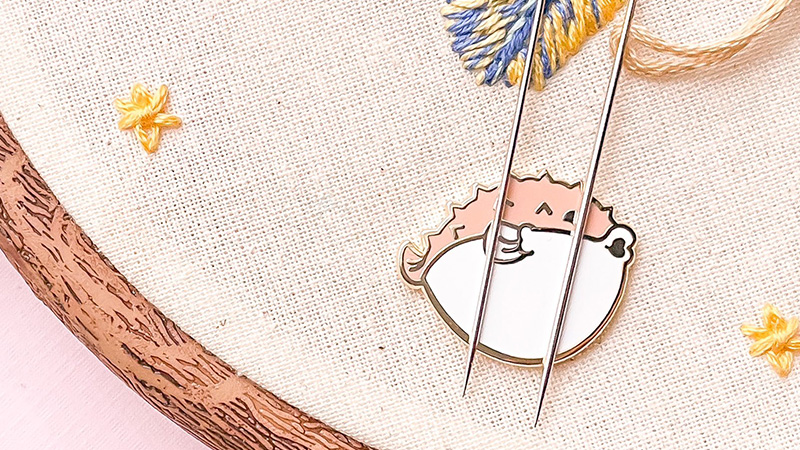
Crewel embroidery needles are essential tools for intricate stitching projects. These needles feature a sharp point and a slightly larger eye, allowing them to accommodate thicker embroidery floss or yarn.
Their unique design makes them perfect for crewelwork, a technique that combines intricate stitches and textured effects. The sharp point effortlessly pierces fabric, while the larger eye simplifies threading.
This combination enables the creation of elaborate designs with a variety of thread thicknesses. Whether you’re embellishing fabrics or adding intricate details, crewel embroidery needles provide the precision and versatility needed to bring your creative visions to life with stunning detail and finesse.
19. Metallic Thread
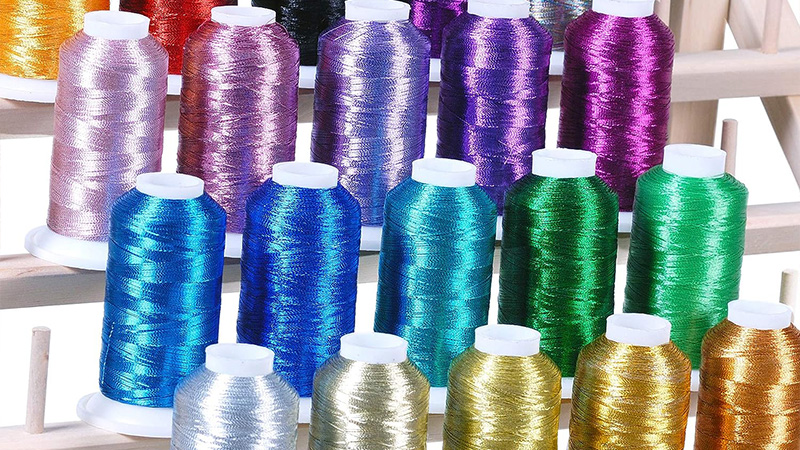
Metallic fibers are a type of manufactured fiber that are composed of metal, metal alloys, plastic-coated metal, metal-coated plastic, or a core that is completely covered by metal.
These fibers have a long history, beginning with their application in textile and clothing.
Since ancient times, gold and silver fibers have been used as yarns for textiles to add decoration to the fabric. The metal used for metallic fibers can be an alloy of two or more metals, a plastic-coated metal, or a metal-coated plastic.
The plastic-coated metal is a combination of a metal core, with a plastic coating that is applied to protect the metal from corrosion or oxidation.
The metal-coated plastic is a combination of a plastic core with a metal coating that is applied to give the fabric a shiny metallic look. Metallic fibers are used in a variety of applications, from fashion to automotive.
In the fashion industry, they are used for items such as dresses, blouses, trousers, and accessories.
Metallic fibers can also be used for insulation in automotive applications, such as door panels and headliner materials. Metallic fibers have become popular in recent years due to their versatility and ability to be used in a wide range of applications.
They are also a durable and cost-effective option for many industries, making them a great choice for companies looking for a unique and cost-effective way to add a touch of luxury to their products.
20. Tapestry Needles
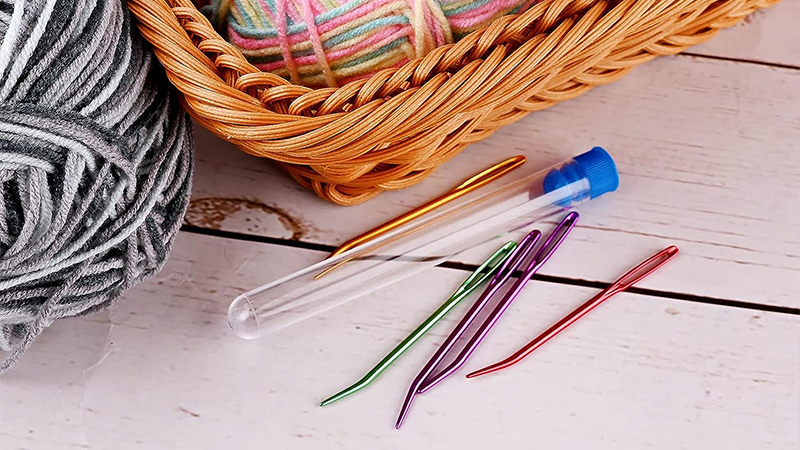
Tapestry needles are indispensable tools for needlework, particularly in projects like cross-stitch and needlepoint. These needles have a blunt tip and a large, elongated eye, making them suitable for weaving through fabric without splitting fibers.
Their design prevents snagging and ensures smooth stitching, making them essential for intricate patterns and large areas of color. Tapestry needles come in various sizes, accommodating different fabric counts and thread thicknesses.
With their user-friendly features, they enable efficient and comfortable stitching, allowing needleworkers to achieve clean and precise results while creating beautifully detailed designs on fabric with ease.
21. Beading Needles
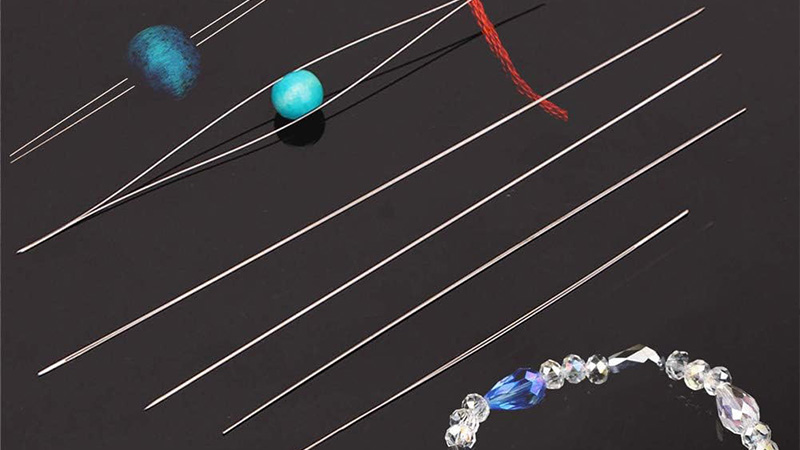
Beading needles are delicate and essential tools for intricate beadwork and jewelry making. With a thin, flexible structure, they easily pass through the small holes of beads, allowing for precise threading and meticulous detailing.
These needles are designed to minimize damage to beads and prevent them from breaking or chipping during the threading process. Their slender profile makes them ideal for creating intricate bead patterns and weaving threads through tight spaces.
Beading needles come in different sizes, catering to various bead sizes and stringing materials. Whether you’re crafting intricate jewelry or embellishing textiles, beading needles ensure accuracy and finesse in every stitch.
22. Milliner Needles
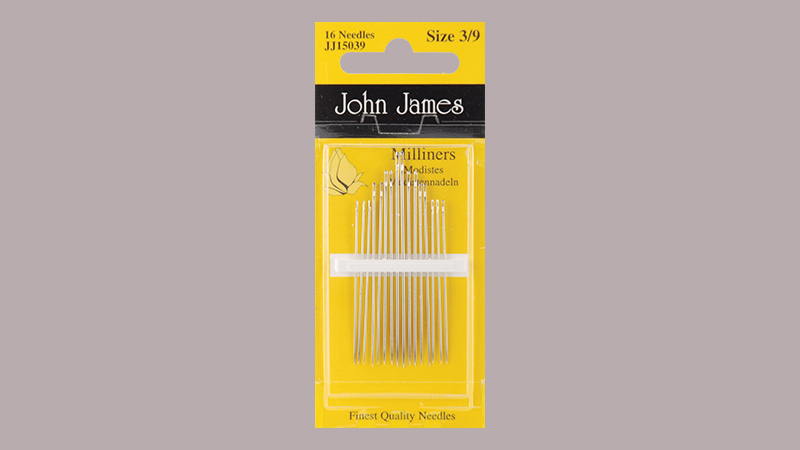
Milliner needles, also known as straw needles, are specialized tools for fine hand sewing and millinery work. With a round eye and a sharp, slender point, they are perfect for delicate fabrics, intricate stitching, and attaching trims.
These needles excel in tasks like attaching feathers, ribbons, and fabrics to hats and headwear. The round eye allows for smooth threading of various threads, from standard sewing thread to thicker cords.
Milliner needles offer precision when creating intricate designs and attaching embellishments, making them an essential choice for both professional milliners and crafters working on detailed sewing projects that demand finesse and accuracy.
Conclusion
The journey of embroidery is enriched by the careful selection of materials, each playing a crucial role in shaping your creative vision. As you embark on this artistic endeavor, remember that the quality of your tools influences the quality of your craft.
From fabrics that embrace your design to threads that breathe life into it, each element contributes to the symphony of stitches. Take the time to explore and invest in reputable sources for your materials, ensuring a seamless and delightful embroidery experience.
With the right materials in hand, your artistic expression will flourish, leading to stunning creations that reflect your passion and dedication. So, stitch by stitch, let your imagination thrive and your embroidery legacy unfold.
Leave a Reply